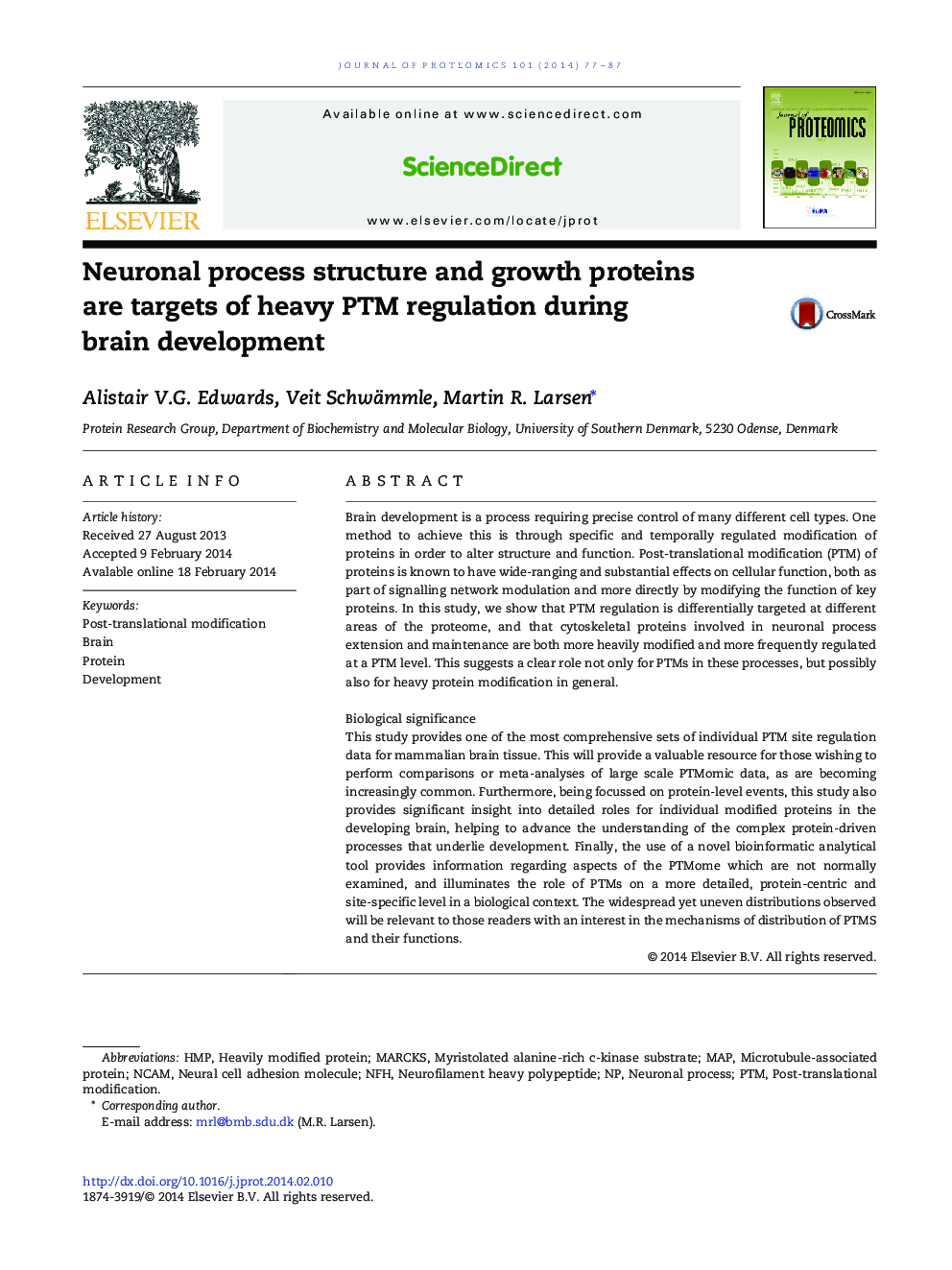| Article ID | Journal | Published Year | Pages | File Type |
|---|---|---|---|---|
| 1226001 | Journal of Proteomics | 2014 | 11 Pages |
•We reveal PTM distribution heterogeneities within proteins using novel bioinformatics approaches.•We show that particular protein functional categories are targeted for heavy modification.•We suggest a role for localised heavy modification of proteins in developing neurons.
Brain development is a process requiring precise control of many different cell types. One method to achieve this is through specific and temporally regulated modification of proteins in order to alter structure and function. Post-translational modification (PTM) of proteins is known to have wide-ranging and substantial effects on cellular function, both as part of signalling network modulation and more directly by modifying the function of key proteins. In this study, we show that PTM regulation is differentially targeted at different areas of the proteome, and that cytoskeletal proteins involved in neuronal process extension and maintenance are both more heavily modified and more frequently regulated at a PTM level. This suggests a clear role not only for PTMs in these processes, but possibly also for heavy protein modification in general.Biological significanceThis study provides one of the most comprehensive sets of individual PTM site regulation data for mammalian brain tissue. This will provide a valuable resource for those wishing to perform comparisons or meta-analyses of large scale PTMomic data, as are becoming increasingly common. Furthermore, being focussed on protein-level events, this study also provides significant insight into detailed roles for individual modified proteins in the developing brain, helping to advance the understanding of the complex protein-driven processes that underlie development. Finally, the use of a novel bioinformatic analytical tool provides information regarding aspects of the PTMome which are not normally examined, and illuminates the role of PTMs on a more detailed, protein-centric and site-specific level in a biological context. The widespread yet uneven distributions observed will be relevant to those readers with an interest in the mechanisms of distribution of PTMS and their functions.
Graphical abstractFigure optionsDownload full-size imageDownload high-quality image (168 K)Download as PowerPoint slide
